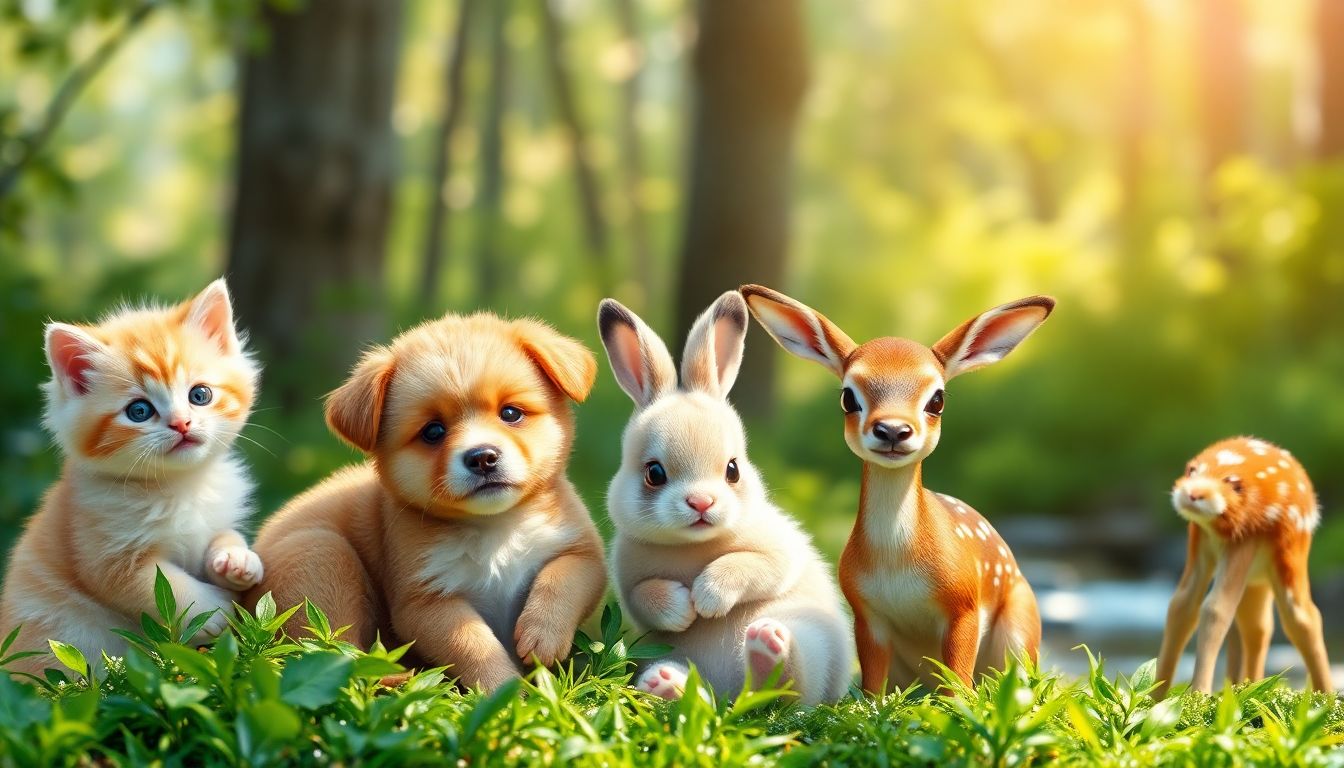
Have you ever seen a puppy and just felt…happy? Cute animals have an almost magical power over us. It doesn't matter where you're from or what language you speak. A fluffy kitten or a playful penguin can bring a smile to your face.
Why Do We Find Animals Cute? Exploring the Science of Cuteness
But why do we react this way? What makes a creature "cute"? Science has some answers. It turns out, our brains are wired to respond to certain features. Understanding this can really show us something.
The Baby Schema (Kindchenschema)
Ever wonder why babies are so cute? There's a reason! Scientists call it the "baby schema," or Kindchenschema. This refers to a set of features that trigger our caregiving instincts. Big eyes, round faces, small noses, and chubby cheeks are all part of this. When we see these features, even in animals, our brains go into "aww" mode.
Evolutionary Advantages of Responding to Cuteness
Responding to cuteness isn't just a random reaction. It might have helped us survive! Back in the day, caring for babies was crucial. Those who were drawn to infants were more likely to protect and nurture them. This ensured the survival of their genes. Liking cute things helped early humans survive and pass on genes.
The Role of Hormones and Neurotransmitters
When you see a cute animal, your brain releases happy chemicals. Dopamine, the pleasure hormone, floods your system. Oxytocin, the "love hormone," also kicks in. These chemicals make you feel good and strengthen your bond with the animal. These things reinforce those feel good feelings.
Key Features That Define Cuteness in Animals
So, what exactly makes an animal cute? It's not just one thing, but a combination of features. Lets discover these features, shall we?
Physical Characteristics: Big Eyes, Small Noses, and Round Faces
Think of a kitten or a puppy. What do they have in common? Big, innocent eyes, tiny noses, and soft, round faces. These features are similar to those of human babies. This triggers the same nurturing response in us.
Behavioral Traits: Playfulness, Clumsiness, and Innocence
It's not just about looks. How an animal acts matters too! Playful behavior, like a puppy chasing its tail, makes them more endearing. Clumsiness and innocence also tug at our heartstrings. Think of a baby penguin waddling around.
The Power of Smallness and Helplessness
Tiny animals often seem extra cute. Their small size and dependence make us feel protective. We want to take care of them. This feeling is especially strong for helpless creatures.
The Most Popular Cute Animals and Why They Captivate Us
Some animals are just universally adored. What makes these guys special? Let's check some out!
Puppies and Kittens: Classic Examples of Cuteness
Puppies and kittens are the kings and queens of cuteness. Their big eyes, clumsy paws, and playful antics make them irresistible. They embody the baby schema perfectly. Many people adore these classic pets.
Pandas: The Endearing Bears
Pandas are another example of pure cuteness. Their black and white markings, round faces, and gentle nature are very appealing. The way they clumsily munch on bamboo is absolutely precious.
Otters: Playful and Social Creatures
Otters are playful and social animals. Their habit of holding hands while they sleep is seriously adorable. Their playful behavior in the water makes them so endearing.
The Influence of Cute Animals on Human Behavior and Well-being
Cute animals don't just make us smile. They can also have a real impact on our health and happiness. Let's see how.
Reducing Stress and Promoting Relaxation
Spending time with animals can lower stress levels. Studies show that petting a dog or cat can reduce blood pressure. Animal-assisted therapy is used to help people relax and heal.
Enhancing Social Connections and Empathy
Cute animals can bring people together. Walking a dog, for example, is a great way to meet new people. Caring for animals can also teach us empathy and compassion.
Ethical Considerations: Responsible Enjoyment of Cute Animals
While it's fun to enjoy cute animals, it's important to be responsible. Our love for these creatures can have some negative consequences.
The Dark Side of the Pet Trade and Exotic Animals
The demand for cute animals can fuel the exotic pet trade. This can lead to the suffering of animals taken from their natural habitats. Some species are even threatened with extinction because of this.
Supporting Conservation Efforts and Responsible Pet Ownership
We can all do our part to protect animals. Support conservation organizations that work to protect endangered species. If you have pets, make sure to provide them with proper care and love.
Conclusion: Embracing Cuteness Responsibly
Cute animals bring joy to our lives. Their adorable features and playful antics make us happy. By understanding the science behind cuteness, we can appreciate them more. Let's all do our part to protect these amazing creatures, so they can continue to brighten our world!











0 Comments